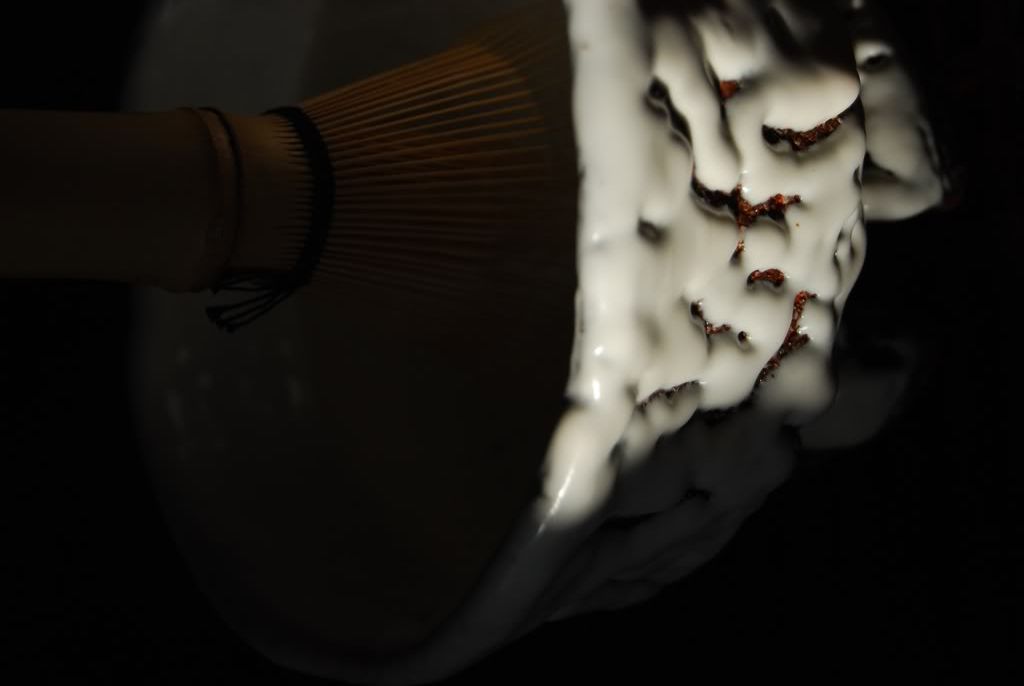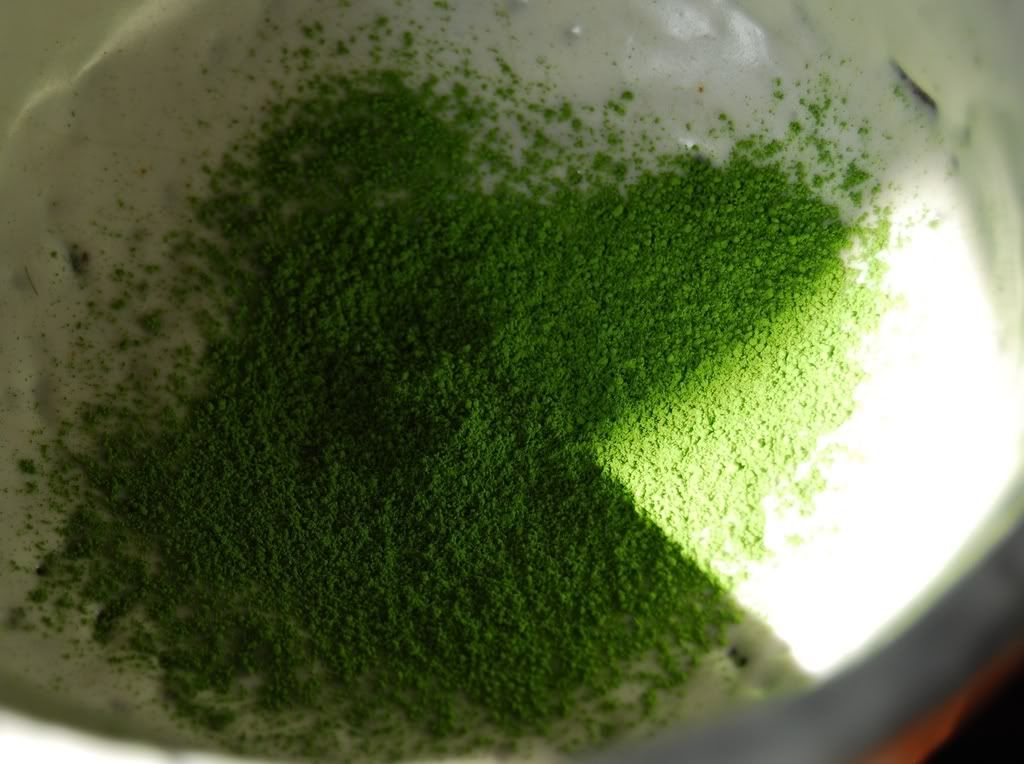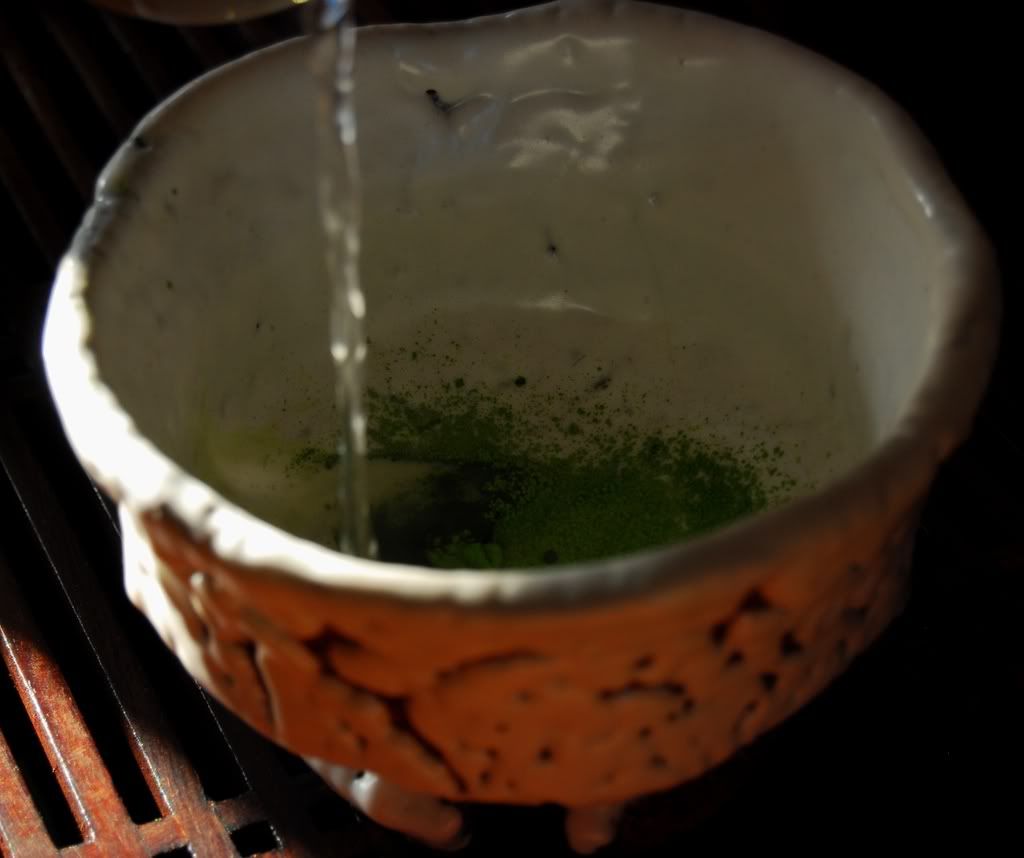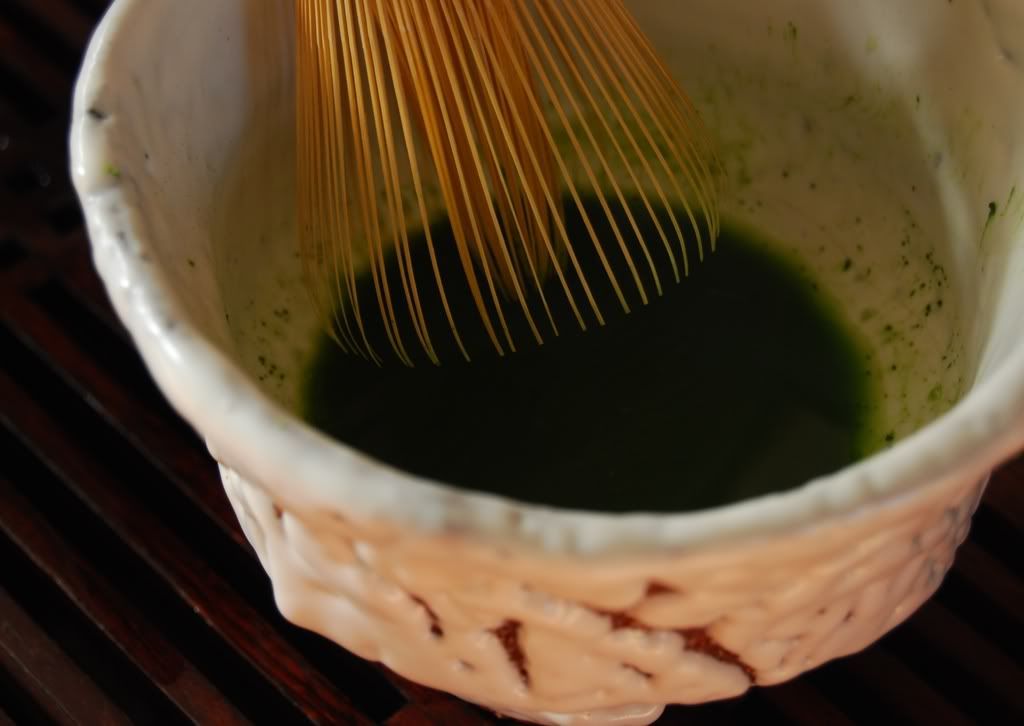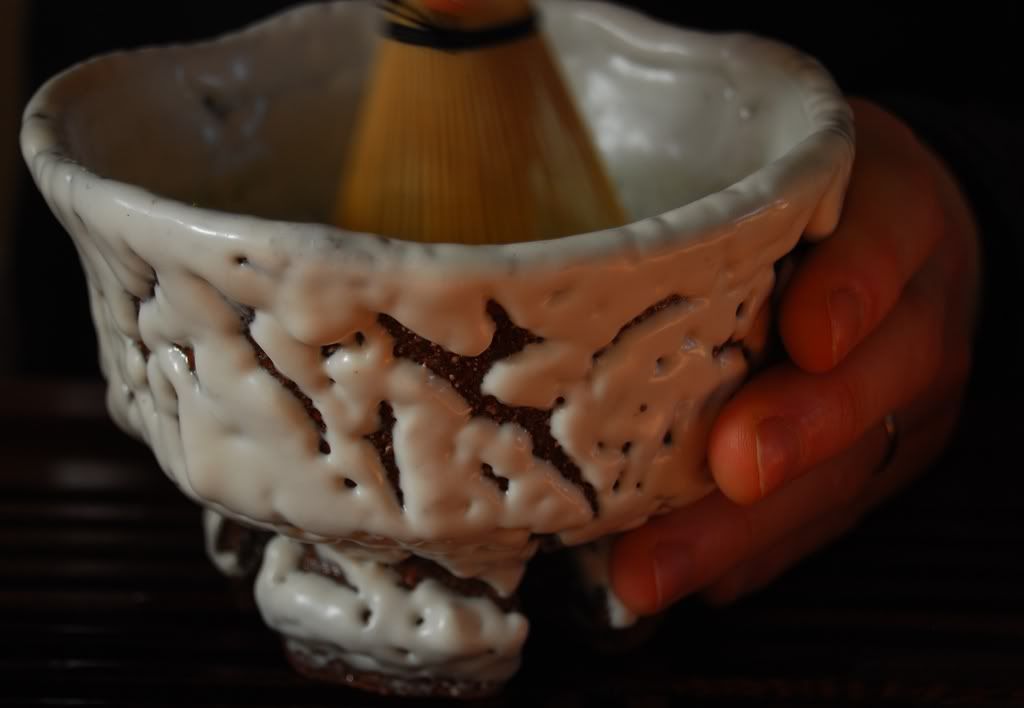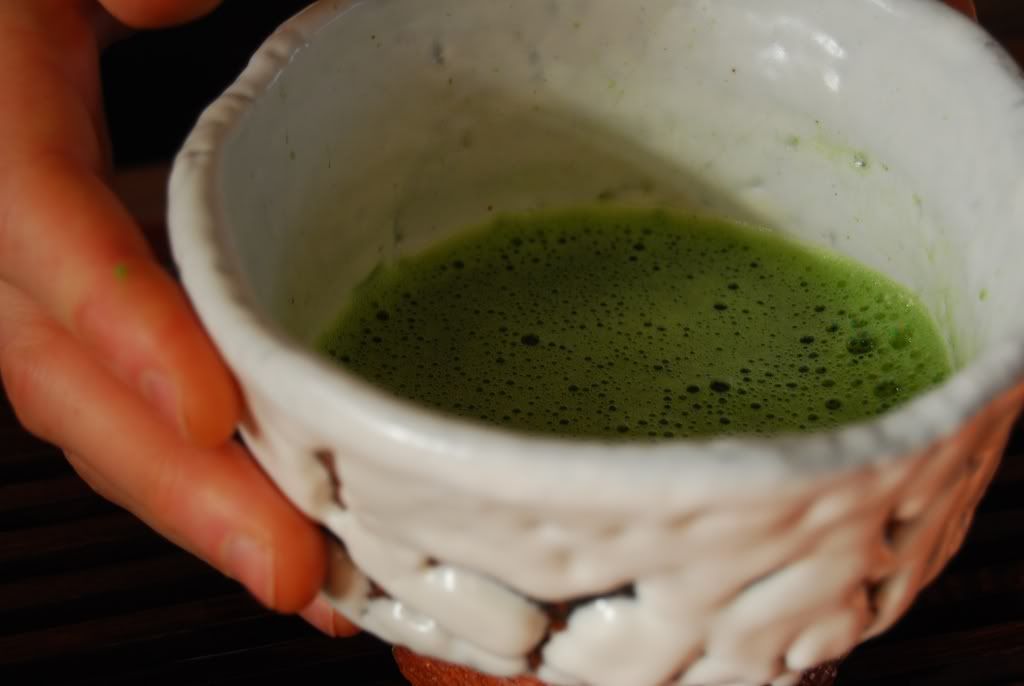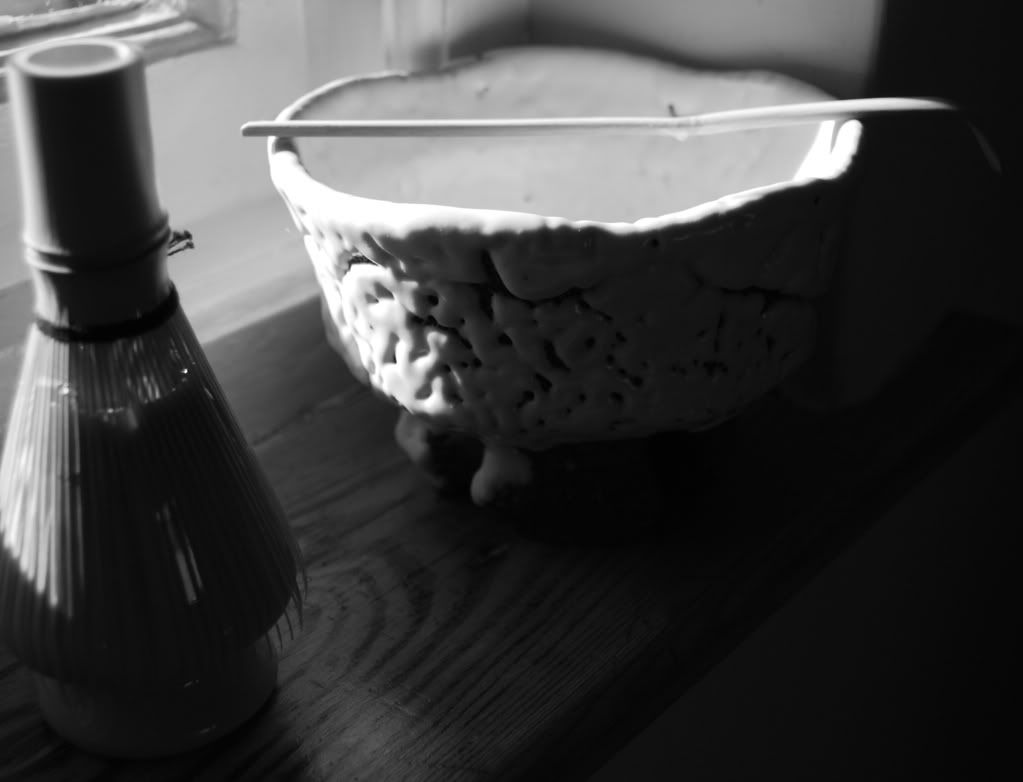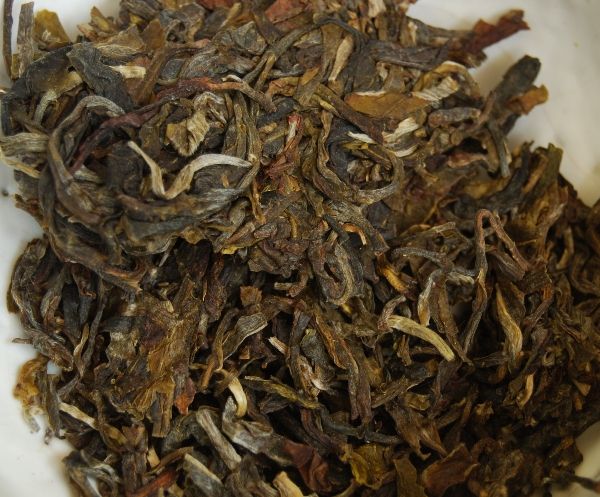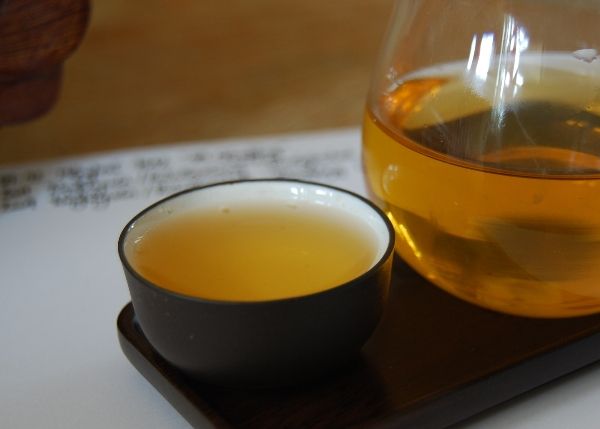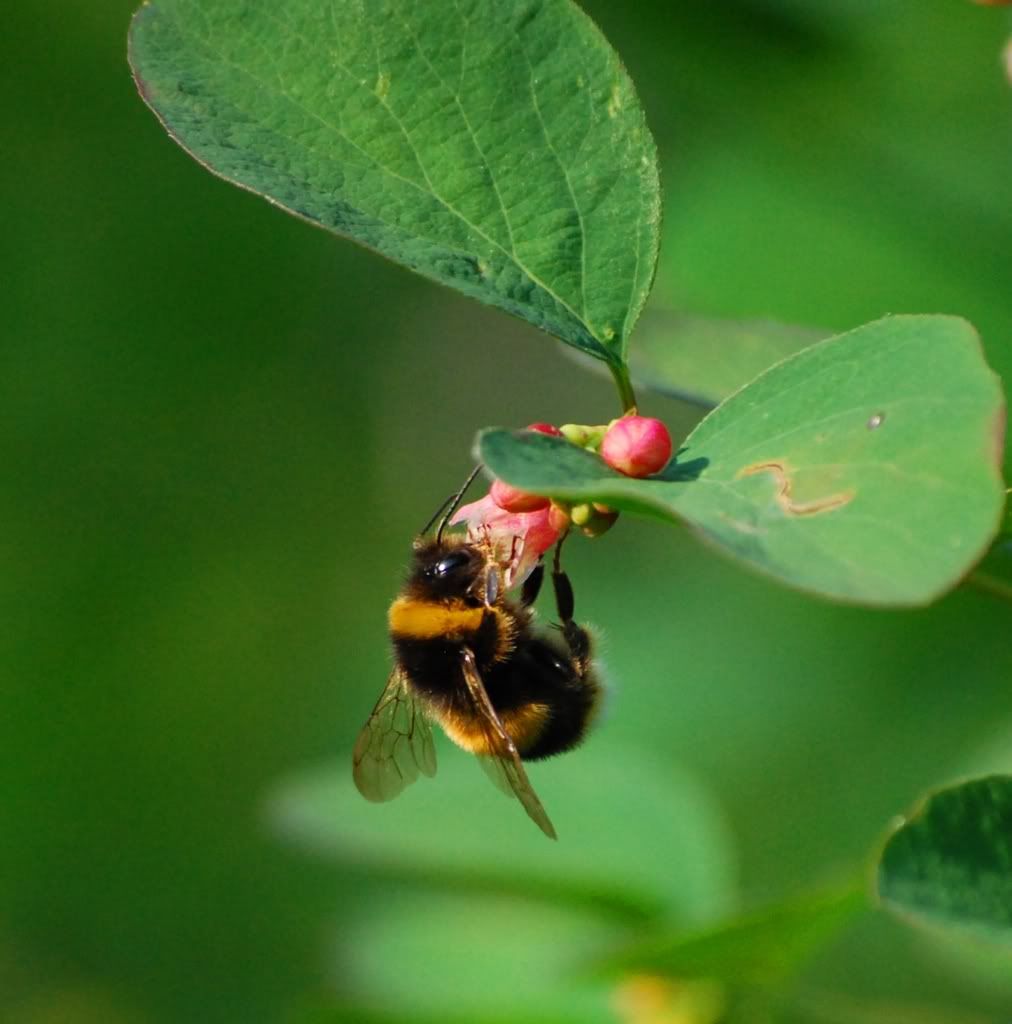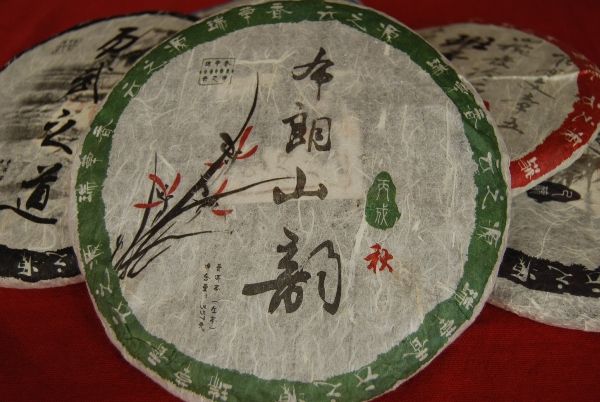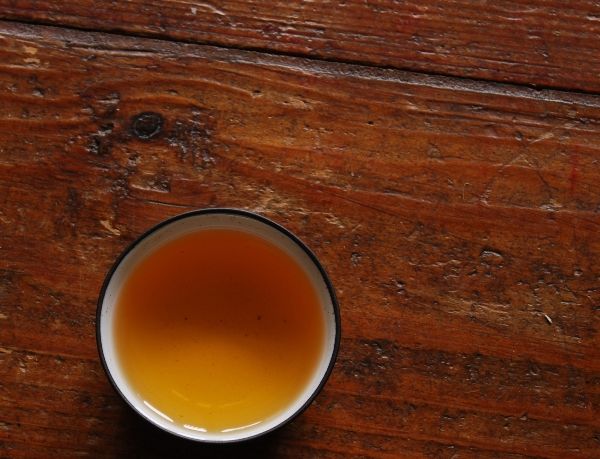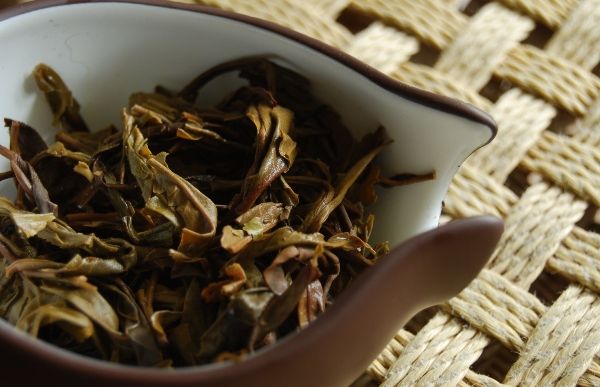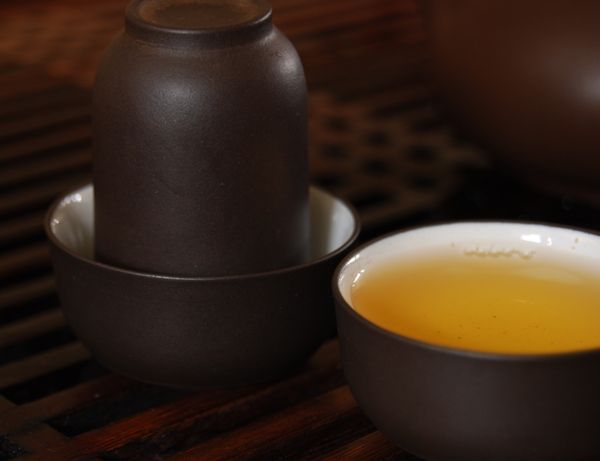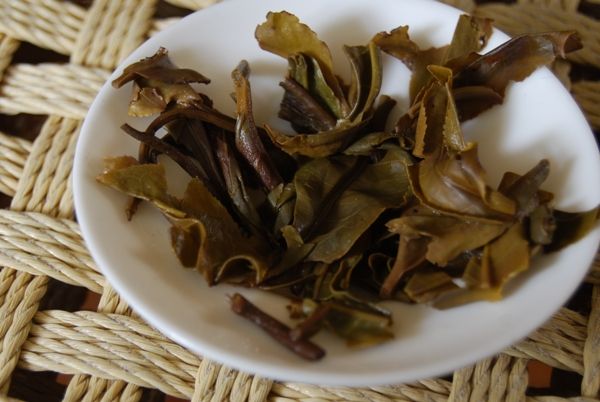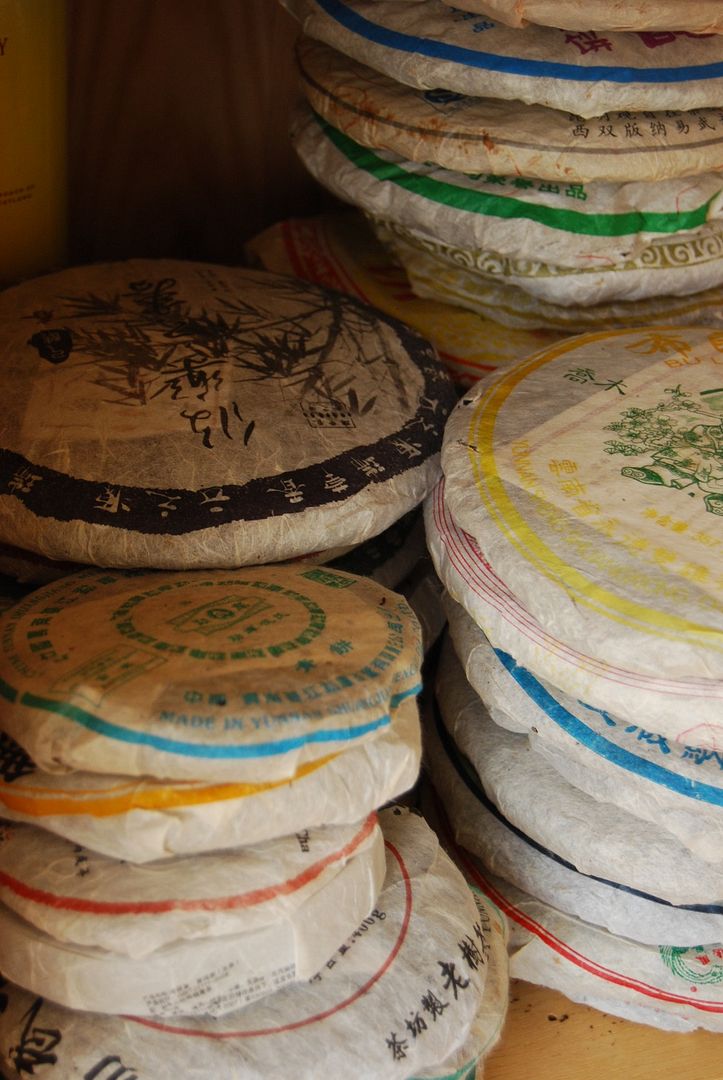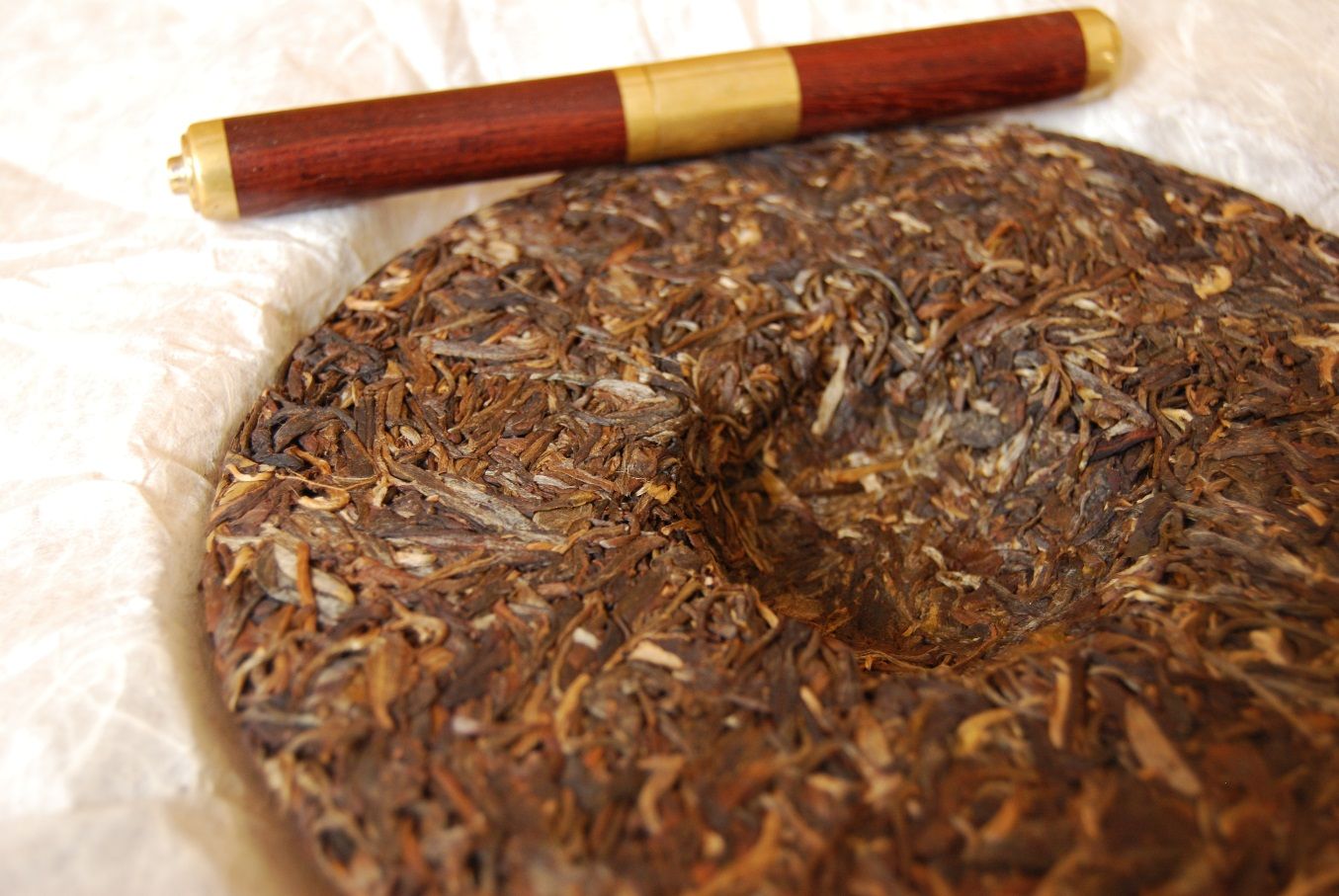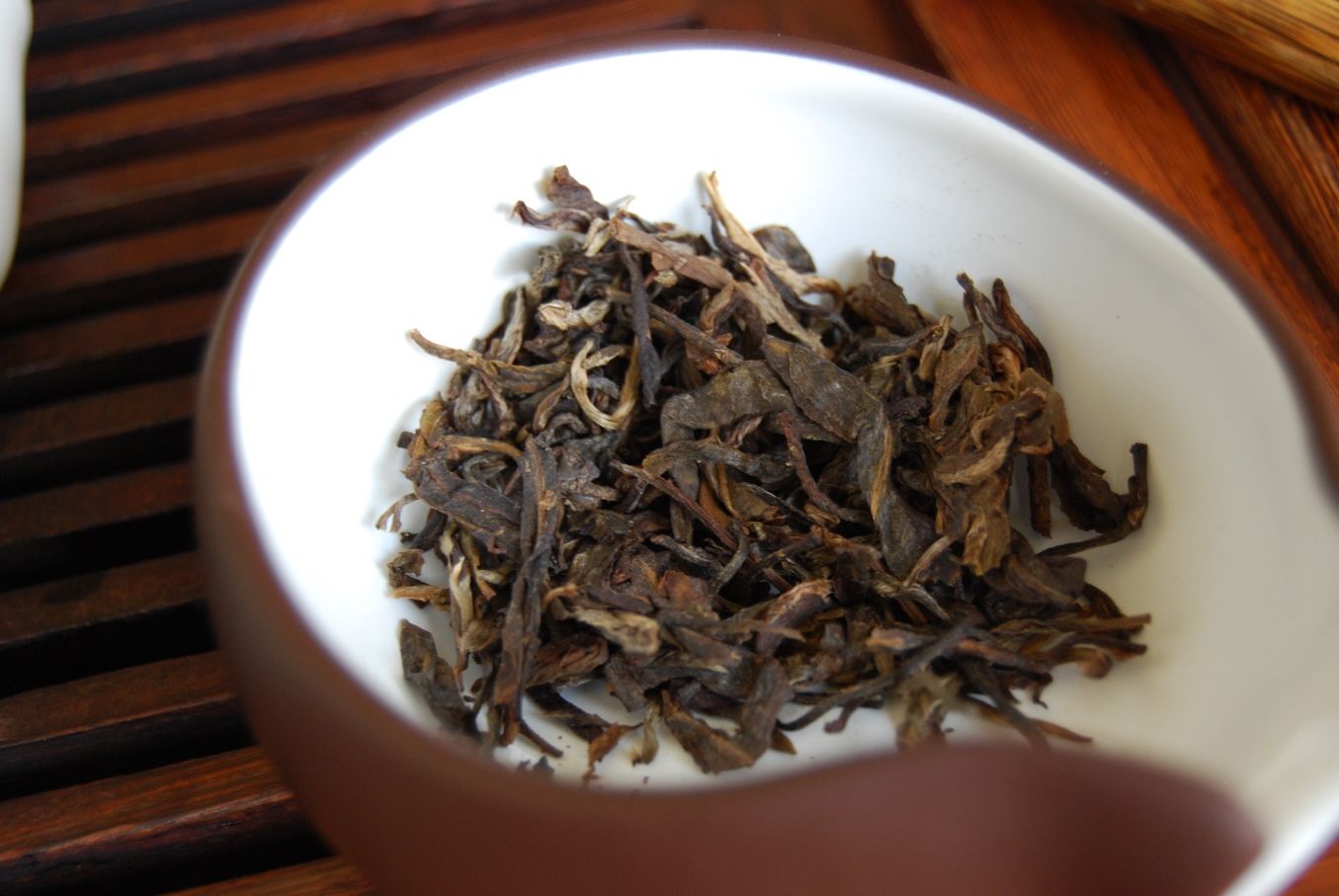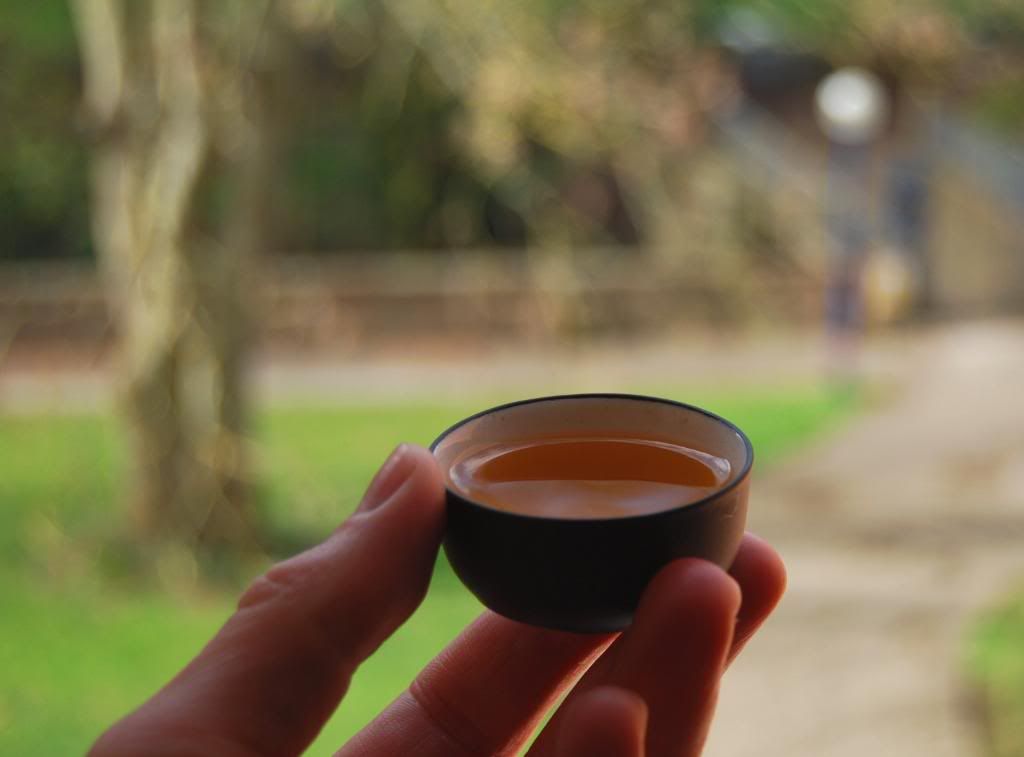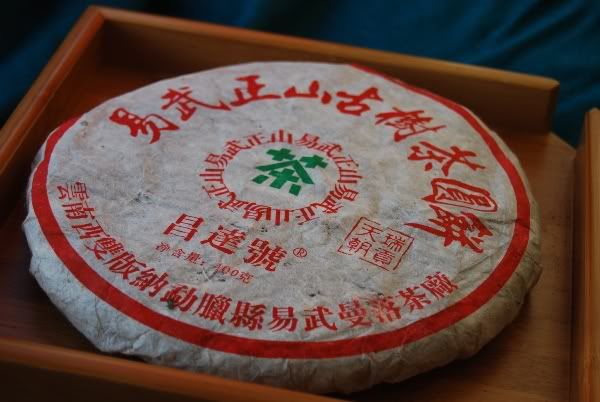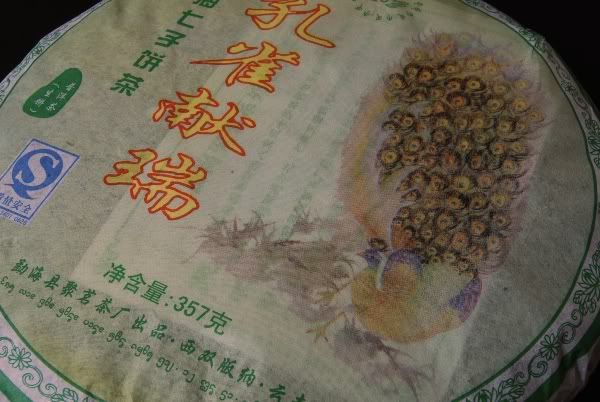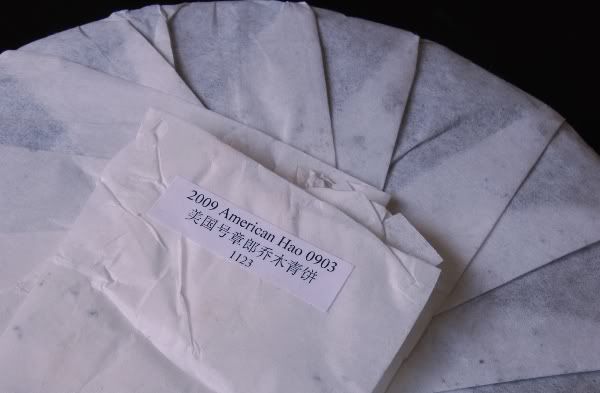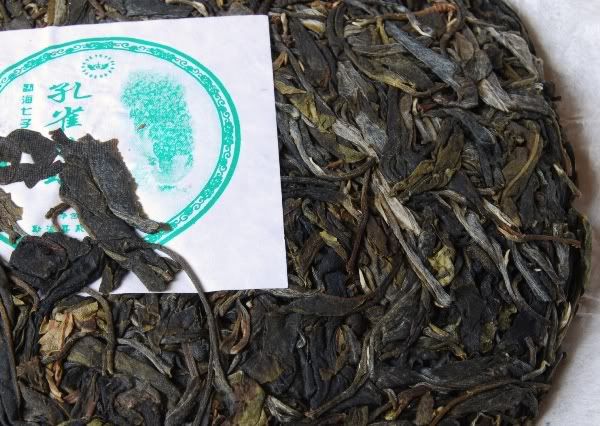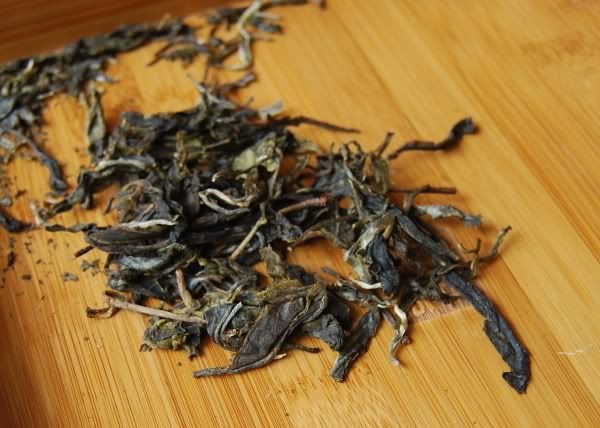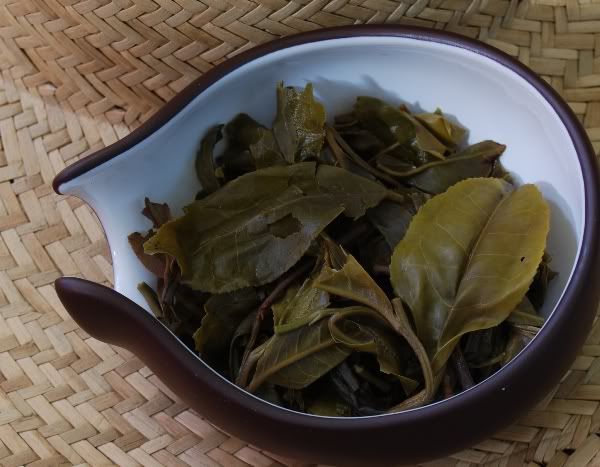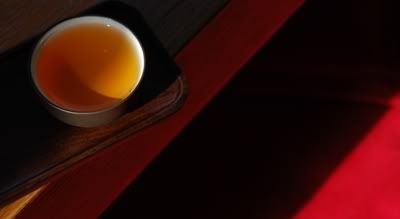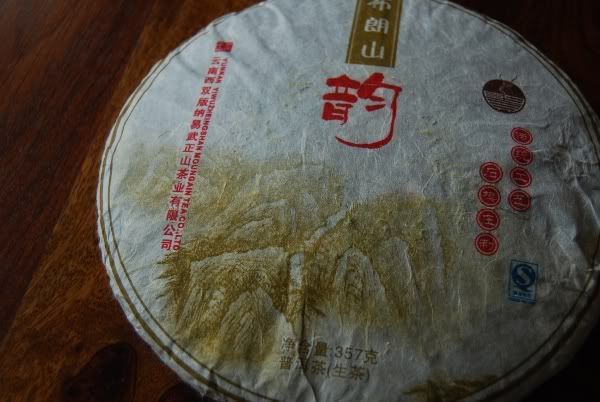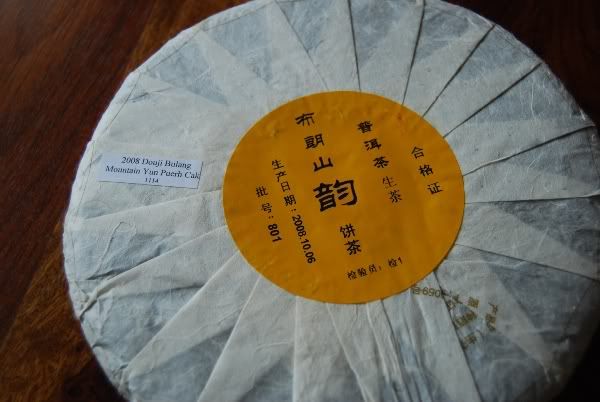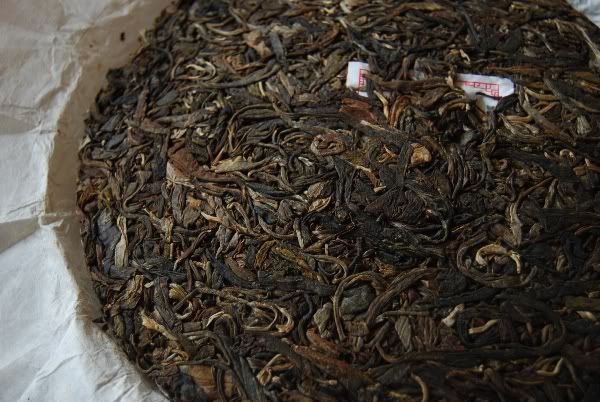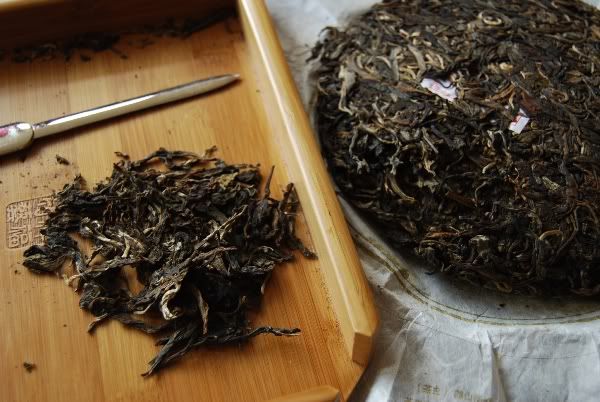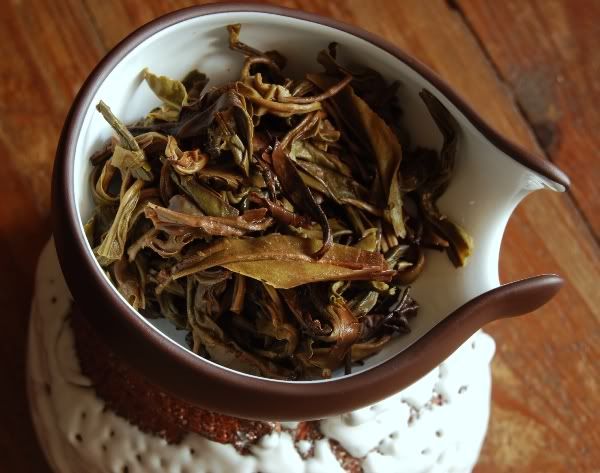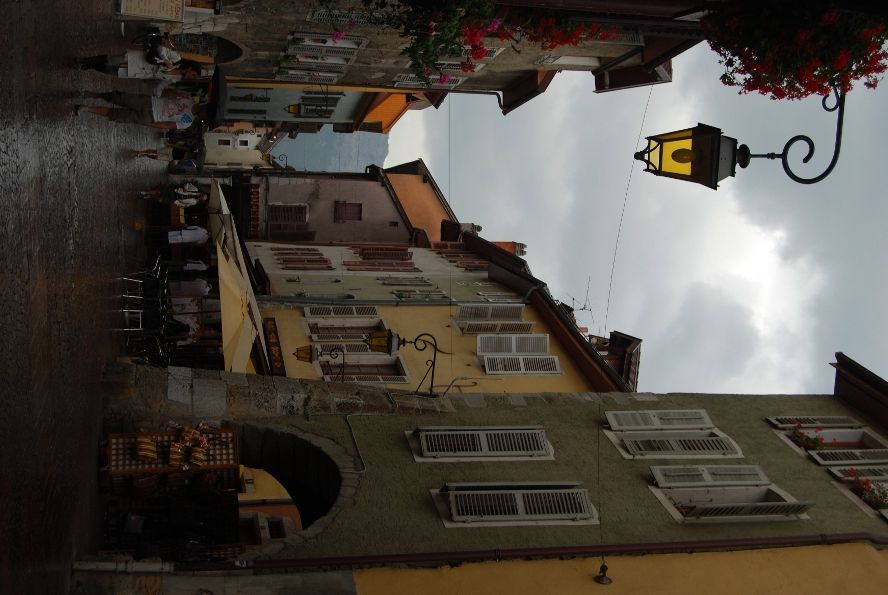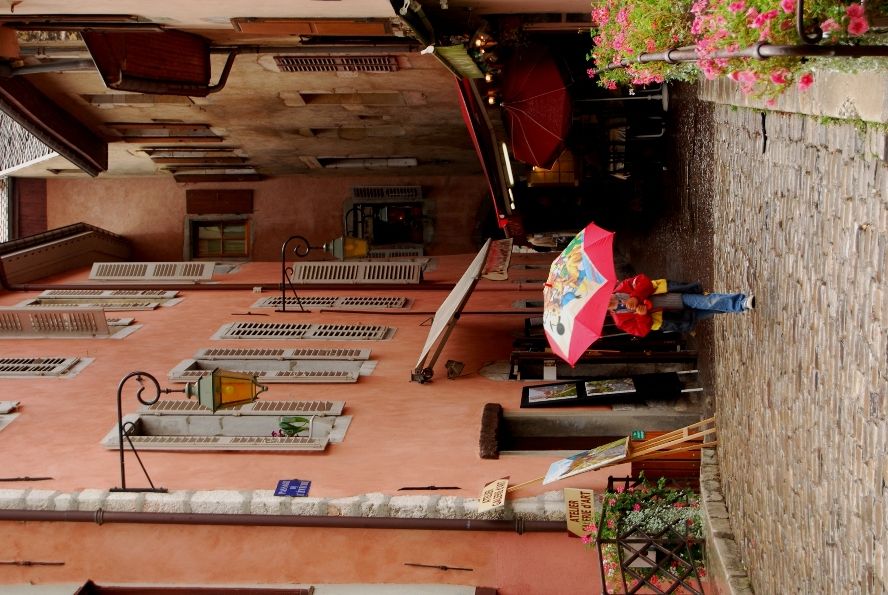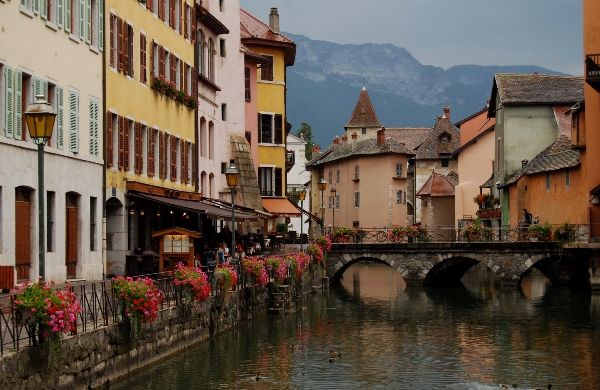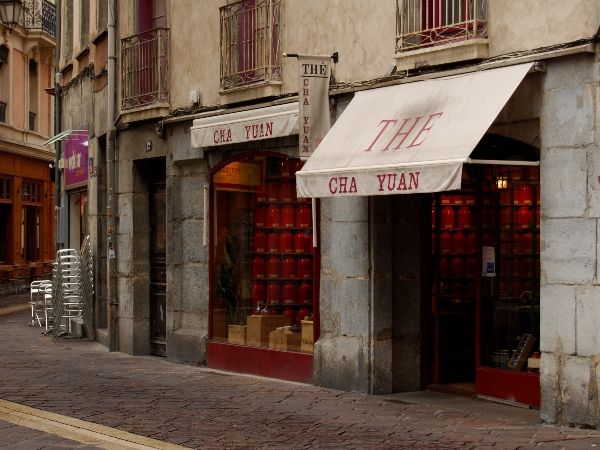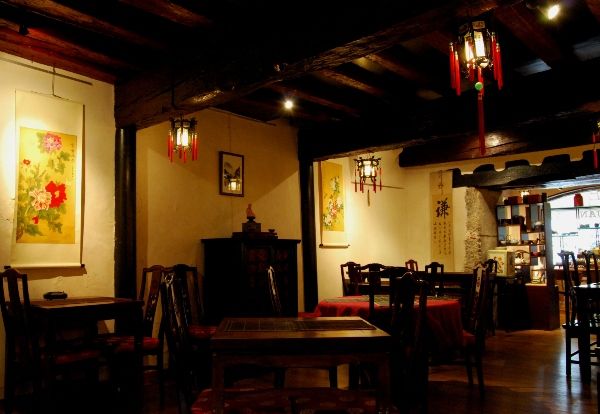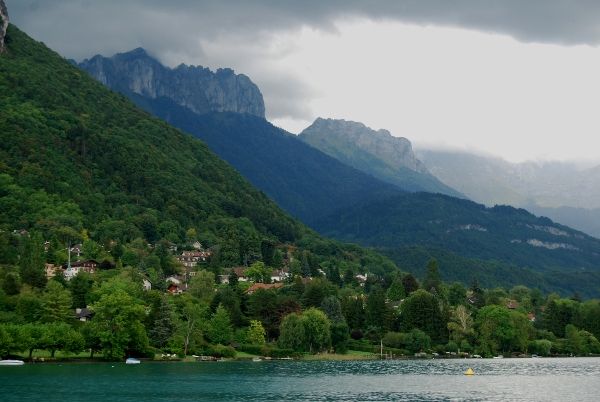This year, Yunzhiyuan [cloud's source] and Ruicaoxiang [auspicious grass-scent] have created a bunch of cakes from around Yunnan. A subset of these are "Yiwu zhi dao" [Yiwu's Road, or "Road to Yiwu" as YS calls them], of which this is the first cake. In 2009, many of the large Western vendors (Nadacha, Yunnan Sourcing, Dragon Teahouse, and Puerh Shop) are selling their own pressings.
This year is the first that I've ever heard of Guafengzhai, a small village somewhere in the Yiwu border region near Laos. However, I've had two Guafengzhai cakes myself so far this year, and ST appears to have come across a third.
All of these YS cakes were pressed in Jonghong, the capital of Xishuangbanna. This Guafengzhai is the most limited, being a production of just 84 cakes, whereas the others seem to be in the 400+ numbers.
This tea smells amazing. I opened the little foil bag (I bought all of my own samples, conflict-of-interest monitors will be relieved to hear) and was immediately bowled over by an immensely pungent aroma of greenest shengpu. It smells of intense fruits and immediately filled the lounge.
As you can see from the image above, the cake consists of medium-sized leaves, which are mostly pressed in large fragments. There are few tips, plenty of huangpian [yellow flakes], and quite a few stalks. I rather approve of "messy" blends like this, as they can be quite complex.
I've been drinking far too many heavy-orange 1-year cakes lately, and so it was refreshing to see that this pu'er brewed a dazzling orange (pictured above). Just like the dry leaves, it has big, bold scents of sweetness that are heavy with buttery sugar.
Just like the lovely old-tree Yiwu maocha that I was fortunate enough to receive from Nadacha, this tea is clean, bright, and sweet. It's hard to estimate its future performance, given the immensity of its green character, which should probably have been left for several more months. However, compared to its peers, it gives the impression that it is chock full of complex content, and that can only be a good thing in my book. The entire experience is bold, full, and, happily, it commands the attention.
I liked this cake the most of all five, and, while I must confess to buying a cake of each, I did buy two of this Guafengzhai. Like the other Guafengzhai I've had this year, it seems clean, forthright, and filled with charm that I hope will give it plenty of scope for improvement over the years.
(This was "alpha" in our tasting event.)
Addendum
November, 2012
Apache is unimpressed by the aging of this cake; I have not tried it since 2009. However, the dark leaves have a decently humid and sweet scent, suggestive of some progress being made.
The soup is orange where once (see above) it was yellow. What was once buttery and sweet is now lower, darker, and has the character is humid, sweet straw. It has an obvious cooling sensation, too, which is decidedly good news.
All of the upper layers of flavour and fragrance have fallen away, leaving the base. It is this base that has developed with age: it tastes woody, malty, and similar to the base of older cakes. It is not a calming cake, however, and after just four small cups, I feel nervously alert, edgy, and brittle. It reminds me of Apache's 2001 7542. I perspire obviously.
The price of this cake has since gone through the roof, but the original is tidy, enjoyable, and aging well.

